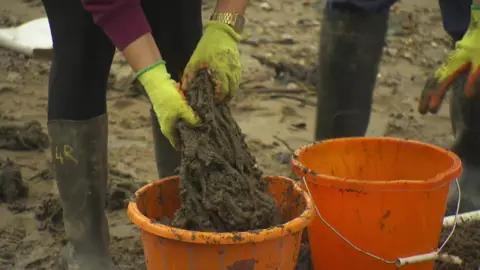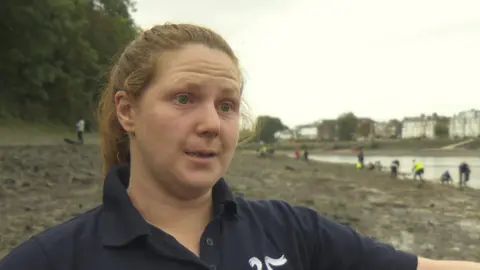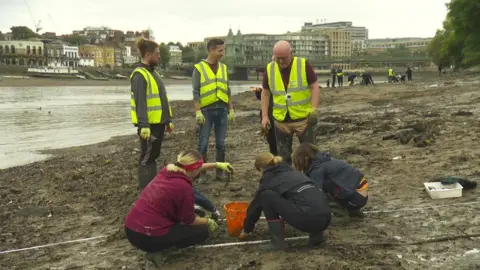Volunteers count wet wipes on bank of River Thames
 BBC
BBCHoards of wet wipes have been counted and removed from a section of the Thames in west London as part of a charity research project.
Volunteers gathered at Hammersmith Bridge on Sunday for the Big Wet Wipe Count, organised by Thames21.
Wipes enter the river through sewage pipes after they are flushed down toilets and build up on the foreshore.
Felicity Rhodes, from Thames21, said: "I'm never not shocked by the amount of wet wipes.
"I've been doing this for a number of years now... it's shocking.
"The message is to bin your wet wipes, don't flush them down the loo."

She added that the charity is campaigning to have the plastics removed from wet wipes so that if they do end up on the riverbank, they break down quicker and do not release microplastics into the environment.
Chloe Houseman, from Thames21, said that in "hotspot" areas, they can find between 50 and 200 wet wipes per square metre.
A spokesperson for Defra said that plastic-containing wet wipes are a "blight" on the country's waterways.
"We are committed to taking action and will launch a UK-wide consultation to ban them this autumn," a spokesperson said.

Thames21 has worked with volunteers, the Port of London Authority (PLA) and Tideway, the company building London's super sewer for an annual count since 2017.
Last year, more than 2,000 wet wipes were counted and removed from the bank in Barnes, by Hammersmith Bridge within two hours.
Data from the count is shared with the PLA which allows it to monitor whether the problem is getting better or worse.

Listen to the best of BBC Radio London on Sounds and follow BBC London on Facebook, X and Instagram. Send your story ideas to [email protected]
